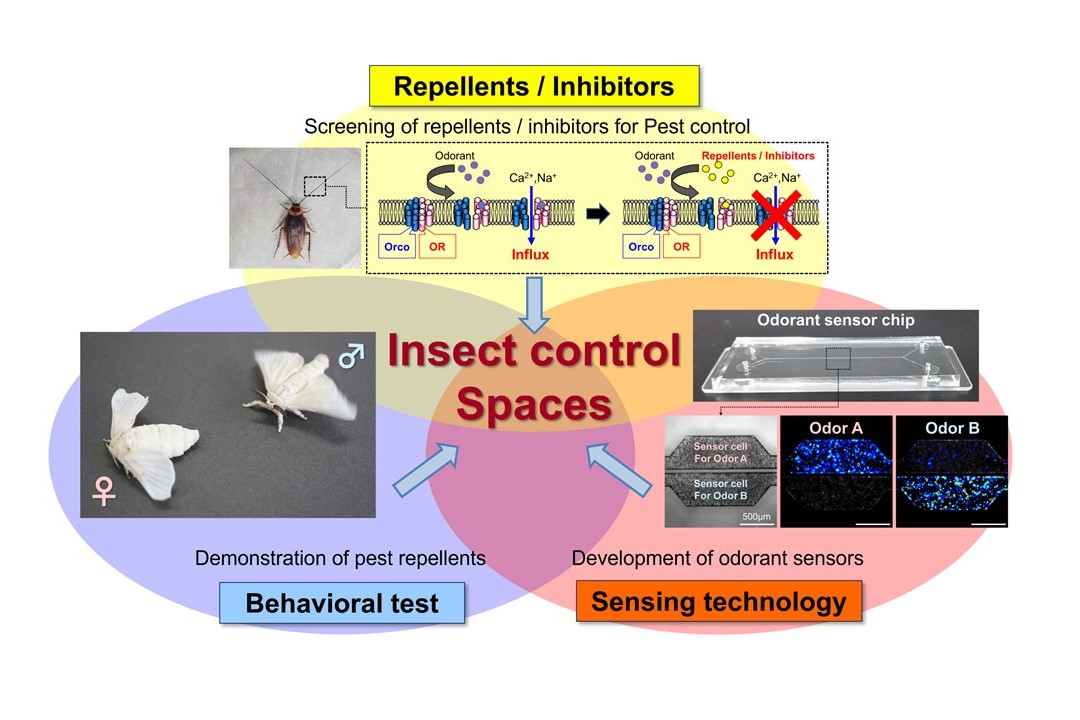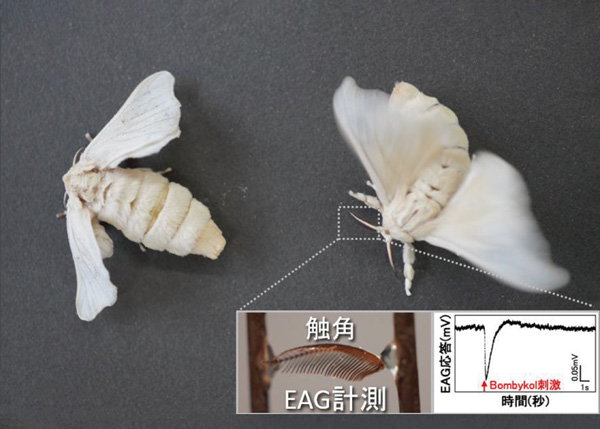- HOME
- Research
- Research Category
- Insect Controlled Space Design Social Cooperation Research Departments
Insect Controlled Space Design
Social Cooperation Research Departments
Design of insect control spaces based on the elucidation of the olfactory mechanism of insects
Insects, including pests, use olfactory receptors on their antennae to detect chemical substances in the environment and exhibit adaptive behavior according to the surrounding world. While insect behaviors in response to the detection of some chemical substances are well studied, we have not yet developed a technology to design a space in which pest behaviors are controlled based on olfactory input. In this research group, we will elucidate the olfactory mechanism of insects from the molecular level to screen chemicals that specifically activate/inactivate the insects' olfaction. We will then search for novel inhibitors/repellents that can control pest behavior more precisely by verifying the effectiveness of the chemicals through electroantennogram (EAG) recordings and behavioral assays. In addition, we will develop an innovative bio-sensing technology based on the insect olfactory mechanism. In this way, we aim to design safe and secure spaces that are friendly to humans and the environment through an interdisciplinary approach based on molecular biology, neuroethology, and sensor engineering.

Research concept of insect-controlled space design

Electroantennogram (EAG) recording and behavioral assay
Cooperation Company/Organization
・DAIKIN INDUSTRIES, Ltd.
Member

Project Associate Professor
Hidefumi MITSUNO

Senior Research Fellow
Ryohei KANZAKI
Laboratory Homepage
Tags

